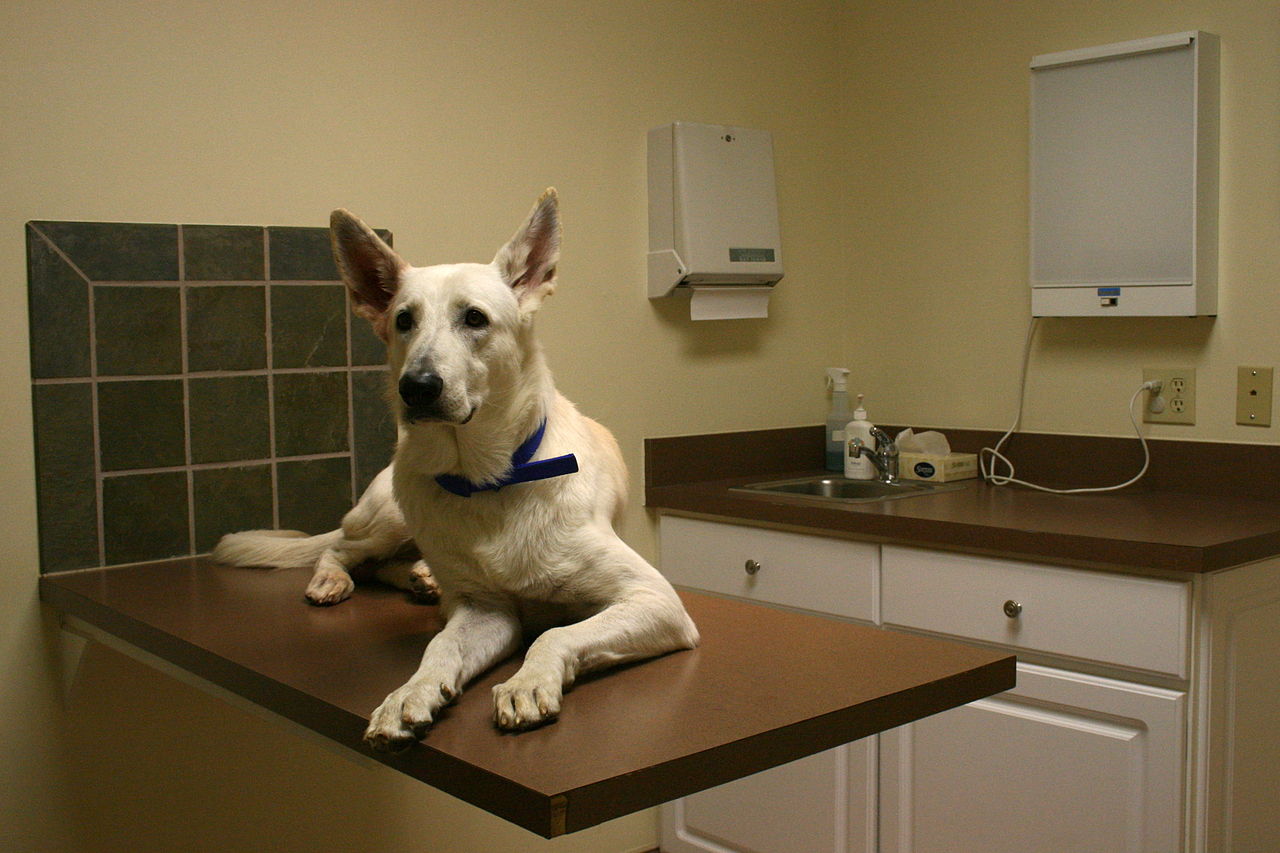My 180 pound Alaskan Malamute was taken to Three Trails Animal Hospital on December 10, 2012, where Dr. Rhodes’ opinion was that Grizz had lymphoma. I left with a prescription for prednisone, and no hope. In the early morning hours of December 21, Grizz could no longer walk, so in a few hours myself, roommate, […]
Dog Diseases
There are a number of diseases dogs are prone to and I’ll talk about some of them here. I’ll also try to include specific breeds of dog that are prone to certain illnesses and diseases.
I would advise you to be aware of your dog’s normal behavior. Signs of illness can be lack of appetite, decreased activity, weakness, not drinking much, not grooming, bad breath, sleeping more than usual, drooling, vomiting, diarrhea, coughing, trouble breathing, frequent and/or bloody urination. If your dog exhibits any of these symptoms or any behavioral changes and you are unsure of what to do, seek the advice of your veterinarian.
Things you need to know:
The normal color of a dog’s gums is pink. Pale, white, blue or yellow gums, contact your vet at once.
Normal temperature for a dog is 100-102.5 degrees Fahrenheit. Less than 99 degrees or over 104 degrees, contact your vet immediately.
A dog’s heart rate slows and speeds with each breath. This is not abnormal. You can check the heart rate by finding the femoral artery inside the back leg. Small dogs and puppies heart rate is 120-160 beats per minute. Dogs that are about 30 lbs. have a rate of 60-120 beats per minute. The larger the dog, the slower the heart rate.
A dog’s normal respiration rate is 10-30 breaths per minute. Panting can be up to 200 pants per minute.
To check if your dog is breathing, hold a tissue or mirror up to his nose. If there is movement or breath on the mirror, your dog is breathing, but get him to the vet immediately.
Problem signs are using the abdominals to breathe, gasping, loud noises, shallow breaths, difficulty exhaling. Call your vet immediately.
If you have any questions, I’ll be happy to answer them.
Note: Many new pet owners do not know about the availability of pet health insurance. Insurance for your dog is a great safety net to have for unforeseeable emergencies or illnesses. It is also helpful in covering routine shots and exams. Some plans start at just five dollars a month. To compare pet insurance plans in your area check out the link above.

Prostatic Hyperplasia in Male Dogs
Benign Prostatic Hyperplasia (BPH) occurs when the prostate gland enlarges (hyperplasia). The prostate surrounds the eurethra and neck of the male dog’s bladder. It is called an accessory sex gland meaning that while it does not produce sperm, it plays and important part in breeding. Prostate fluid helps nourish sperm cells, has antibacterial properties that […]

Yeast Infections in Dogs
Yeast is a naturally occurring spore-form of fungi. We humans and dogs have healthy amounts of yeast on our bodies when our immune system is functioning properly. When the immune system is not balanced and is underactive, problems with overgrown yeast can occur. Yeast infections seem to appear more often in warm weather. Medications are […]

Tonsilitis in Dogs
Dogs have tonsils just as we humans do, two, one on each side at the back of the throat. Tonsils are part of the body’s lymph system and are a catch-all for infection. Tonsils serve to protect the body against bacteria and viruses and can become inflamed and/or infected causing tonsillitis. When this happens, tonsils […]

Addison’s Disease
Addison’s Disease is caused by the adrenal gland not producing enough cortisol or aldosterone. It usually affects young to middle-age female dogs, but any dog can develop the disease. Addison’s is rare in cats. Addison’s is difficult to diagnose because symptoms mirror so many other diseases – fatigue, diarrhea, vomiting and muscle pain. The adrenal […]

Cataracts
The lens of the eye is normally transparent, allowing light through to the retina in back of the eye. A cataract causes the lens of the eye to become cloudy or opaque, decreasing or eventually blocking light to the retina, causing impaired vision and eventually blindness. Cataracts can be hereditary or caused by disease such […]

Trigeminal Neuritis in Dogs
The Trigeminal Nerve is the 5th cranial nerve (or CNV) controlling sensation in the face and motor funtions such as biting and chewing. The Trigeminal Nerve (tri-3, geminis-twin, thrice twined) has three major branches, the opthalmic nerve, the maxillary nerve and the mandibular nerve. The opthalmic nerve transmits information to the upper eyelid, the conjuctiva […]

Ear Problems in Dogs
Deafness – Possible causes of deafness can be congenital (an influence occurring in-utero), genetic (predetermined), infection or wax or hair blocking the ear canal. Deaf animals should have close supervision and always be leashed outdoors as they are not able to hear when there is danger. All dogs can be taught hand signals, but it […]

Cushing’s Disease
Hyperadrenocorticism known as Cushing’s Disease is a hormone disorder. It is more common in dogs but can affect cats as well. The incidence of Cushing’s is higher in older dogs and horses. It is known as PPID in horses. Cushing’s Disease is caused by a steroidal hormone, cortisol, producing more than normal amounts. Among cortisol’s […]

Acne in Cats and Dogs
Acne is usually thought of as a teenage skin condition, but cats and dogs can develop acne too. It can be recognized by red lumps called papulis and blackheads, comedones, on the chin and lip area. Feline acne is much more common than canine acne. The acne spots usually don’t bother your pet. However they […]
